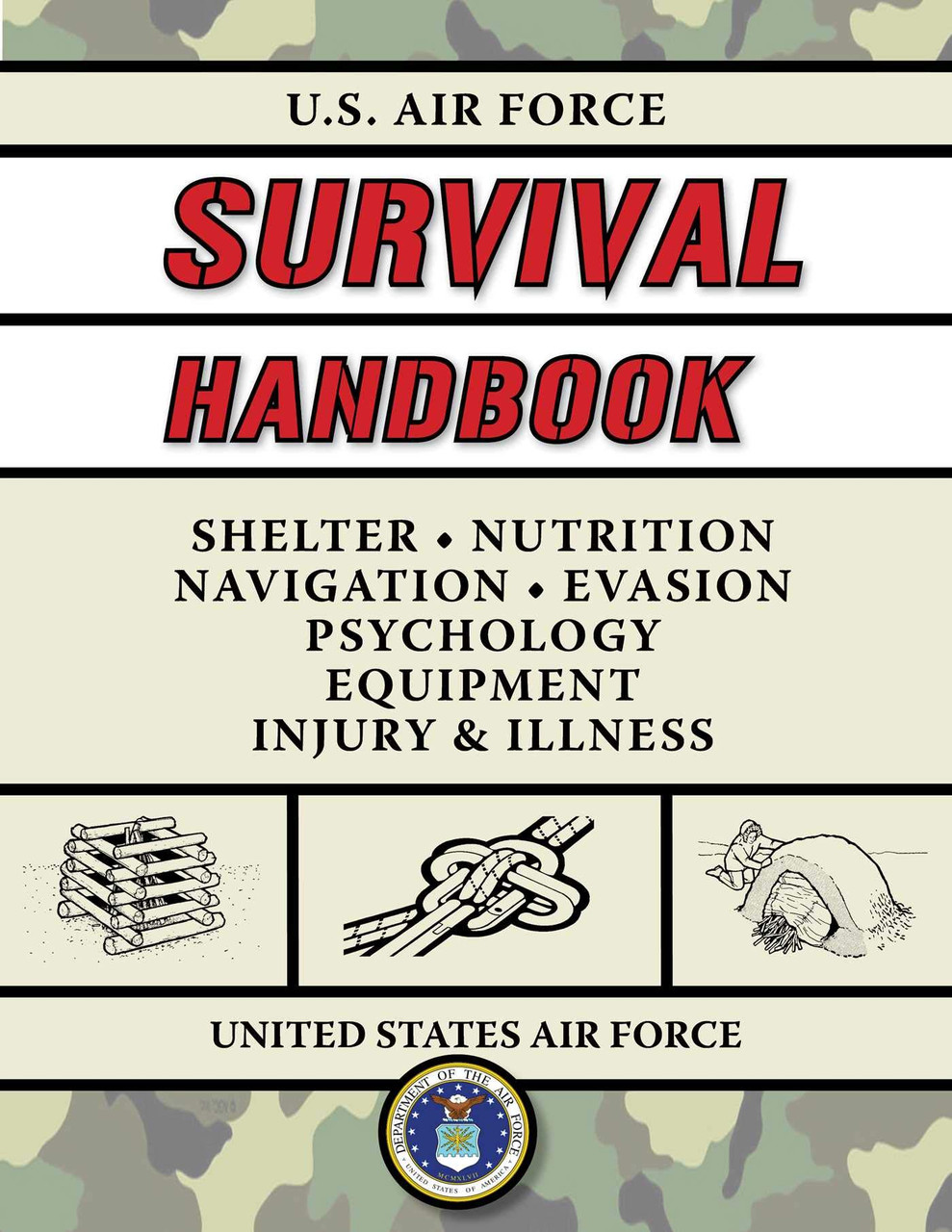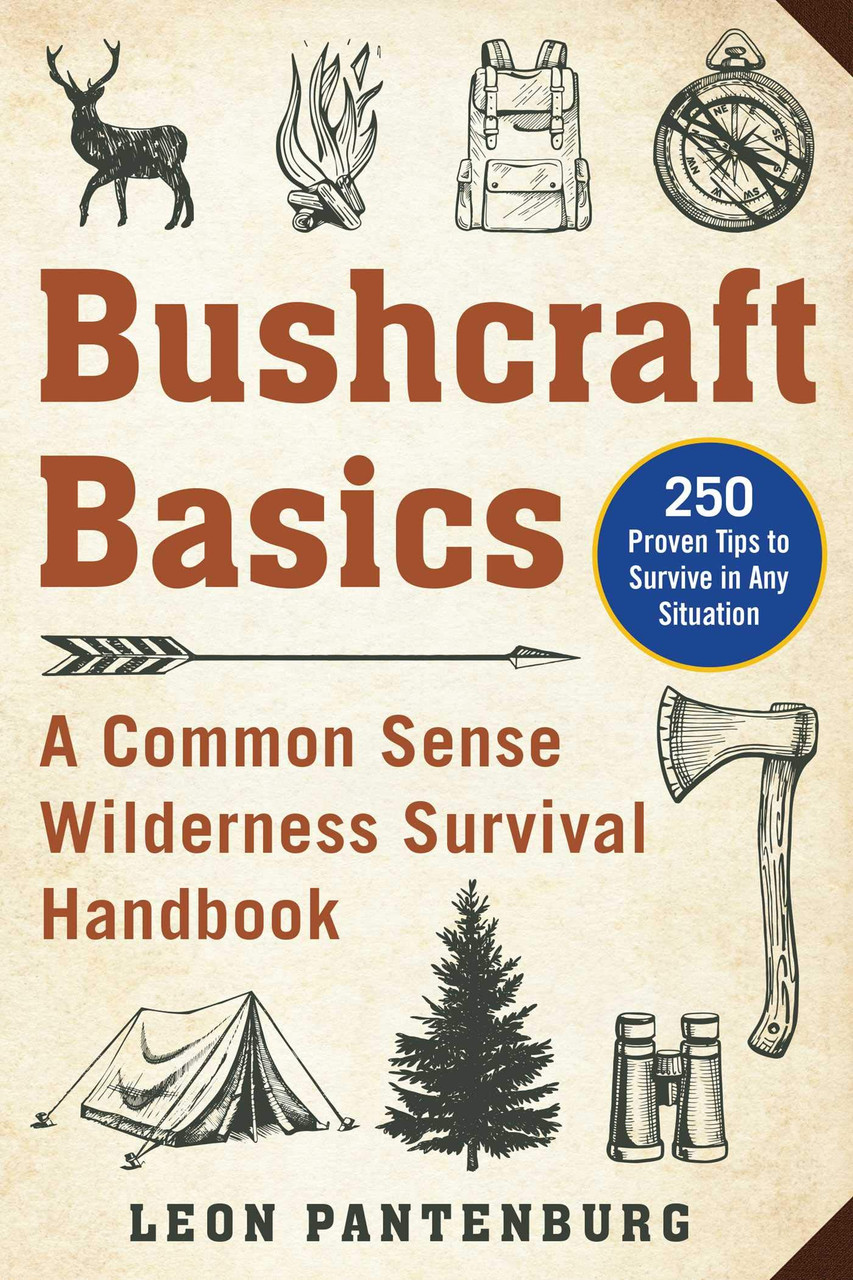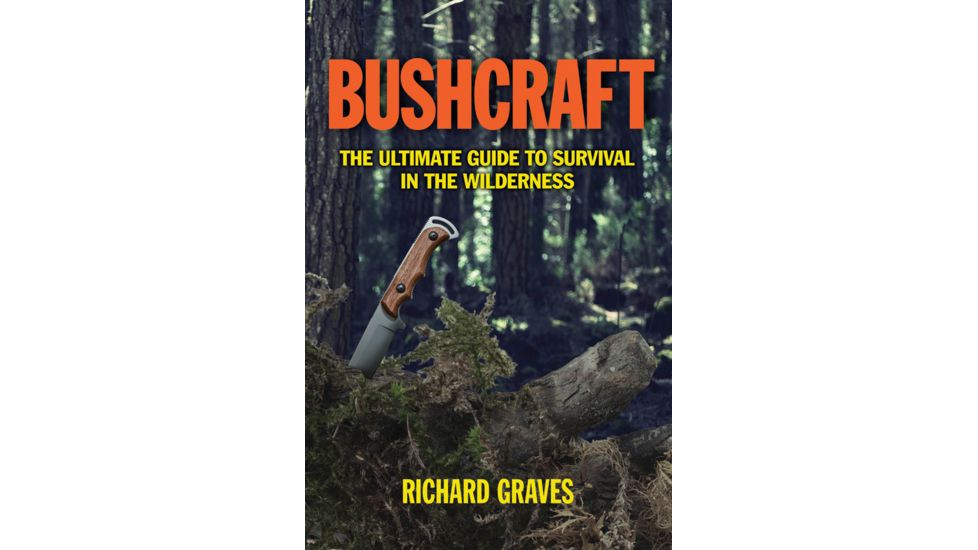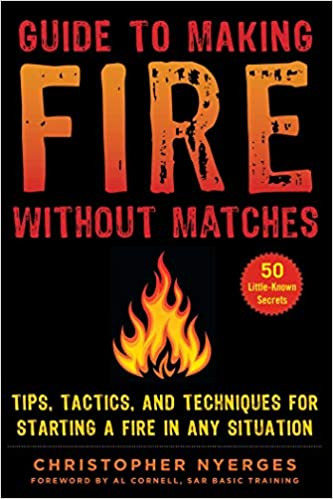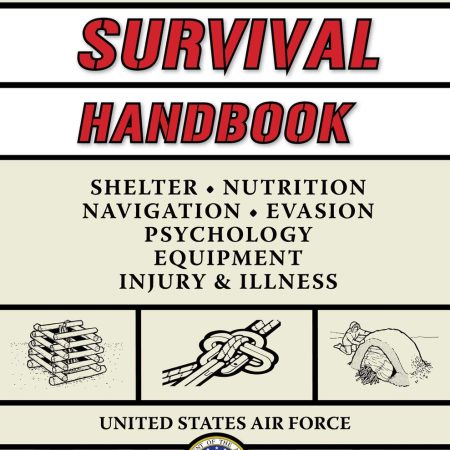| Content | Here is the Official US Air Force guide to staying alive in survival situations—first aid, concealment, survival at sea, building shelter, finding food and water, and more!
This Air Force handbook was written to help pilots who find themselves in hostile environments. While it is designed for use in formal Air Force training, it is also useful for the general reader seeking a comprehensive and complete manual of outdoor survival techniques. Any US Army survival kit would also benefit from this handbook.
Among other pieces of professional and expert advice, the US Air Force Survival Handbook tells readers about:
- Finding your way without a map
- First aid for illness and injury
- Finding food and water
- Building a fire
- Concealment techniques
- Using ropes and tying knots
- Survival at sea
- Signaling for help
- Animal tracking
- Predicting the weather
- Building shelters
Released on the 70th anniversary of the US Air Force, this book outlines specific survival threats found in many different types of terrain and how to survive them. It is invaluable to all who enjoy the outdoors and anyone who seeks insight into the training tactics of the US Air Force.
| In Bushcraft Survival, Pantenburg delivers practical tips and anecdotes that cater to readers who are looking to improve their outdoor skills and prepare for every potential disaster. Drawing from his personal experience as an avid outdoorsman and years as a journalist, Pantenburg lays out easy-to-follow steps to prep for both short and long-term survival situations.
As natural disasters become increasingly present and people continue to rely on reality television shows for survival tips, developing bushcraft abilities is becoming more and more important. In this thorough handbook, Pantenburg covers a wide range of topics, including:
- Developing a survival mindset
- Crafting survival kits
- Choosing clothing best suited to survival
- Picking materials and objects to help you survive
- Building a variety of shelters
- Deciding what survival tools you should pack and which you should leave at home
- Effectively make a fire using different techniques
Filled with time-tested techniques and first-hand experience, Bushcraft Survival is the ideal book for those who want to step up their hiking or camping game, as well as those who are searching for relevant advice on emergency preparedness.
| Illustrated with full-color photographs accompanying easy-to-follow instructions, this unique collection utilizes the best that the online community has to offer, a mammoth database churning out ideas to make life better, easier, and, in this case, greener.
Here are fun, useful projects designed to get you thinking creatively about going green. Let the Instructables team illustrate just how simple it can be to make your own backyard chicken coop or turn a wine barrel into a rainwater collector.
Here, you will learn to:
- Clip a chicken’s wings
- Power your lawn mower with solar power
- Create a chicken tractor for the city
- Water your garden with solar power
- Build a thermoelectric lamp
- Create an algae bioreactor from water bottles
- And much more!
Get started today—making your life greener. Get off the grid!
| This is a full-color edition of the very first Boy Scouts Handbook, complete with the wonderful vintage advertisements that accompanied the original1911 edition, Over 40 million copies in print!
The original Boy Scouts Handbook standardized American scouting and emphasized the virtues and qualifications for scouting, delineating what the American Boy Scouts declared was needed to be a “well-developed, well-informed boy.” The book includes information on:
- The organization of scouting
- Signs and signaling
- Camping
- Scouting games
- Description of scouting honors.
Scouts past and present will be fascinated to see how scouting has changed, as well as what has stayed the same over the years.
| 21 Essential Knots for Everyday Use Indoors or Outdoors! This compact little reference book includes knots for a wide range of functions, from home to work, hobby to play activities. No knot-tying jargon is used, no baffling technical terms--just simple step-by-step instructions and outstandingly clear line drawings. It's the perfectly portable knot reference for anyone--scouts, sailors, hunters, anglers, gardeners, farmers, horse riders, you name it! Among the knots in this book are: Overhand knot, Heaving line knot Reef knot, Sheetbend Fisherman's knot, Figure-of-eight loop, Bowline Three-part crown, Sheepshank Half-hitch, Clove hitch, Constrictor knot, Pile hitch, Highwayman's hitch, Waggoner's hitch, Timber hitch, Double-loop knot, Uni-knot, Blood knot, Square lashing, and more! Start learning these useful and practical knots today.
|
- Sections dealing with all kinds of emergency situations
- Great companion book to the Pocket Guide to Emergency First Aid
- Spiral binding lets pages lay flat for easy reading in the field
- Side tabs let you find the right chapter quickly
- Fully waterproof, dirt-proof, tear-proof, wind-proof, kid-proof.
- Pages are made of specially formulated, heat-treated, PVC plastic - polished, resin-coated polyvinylchloride polymer). Pages feature:
- Bright white printing surface - all printing is clear and precise
- Virtual indestructibility - the pages can't rip or tear, and the corners won't bend over
- Flexibility - pages can bend without breaking
- Washable surface - just wipe clean after use or wash in water
- Steel rule die cut with polished edges - the corners won't poke you while in your hand or in your pocket, as often happens with plastic printed materials
- Will not warp, fade or deteriorate. (Keep out of direct sunlight for prolonged periods - nothing can prevent the sun's ultraviolet rays from "yellowing" any kind of paper or plastic. Under normal conditions it will take years of use for these Pocket Guides to "yellow", and even then they will remain clear and perfectly readable!)
|
